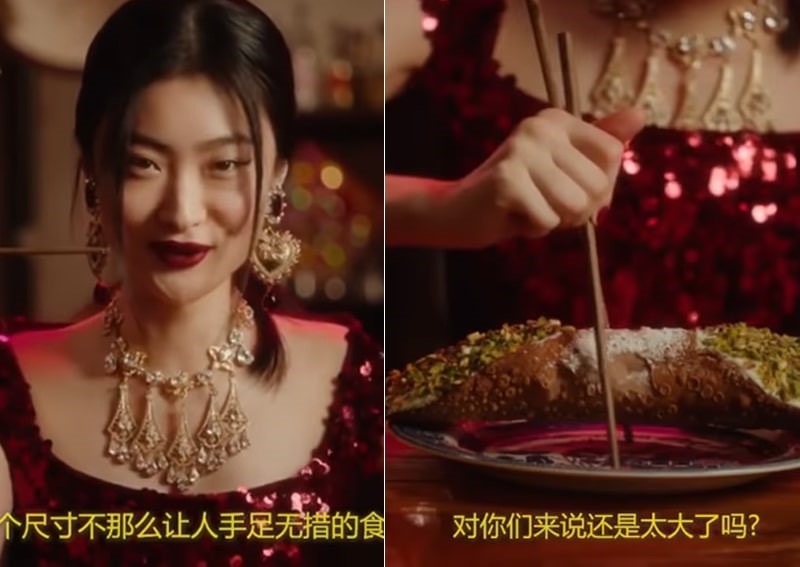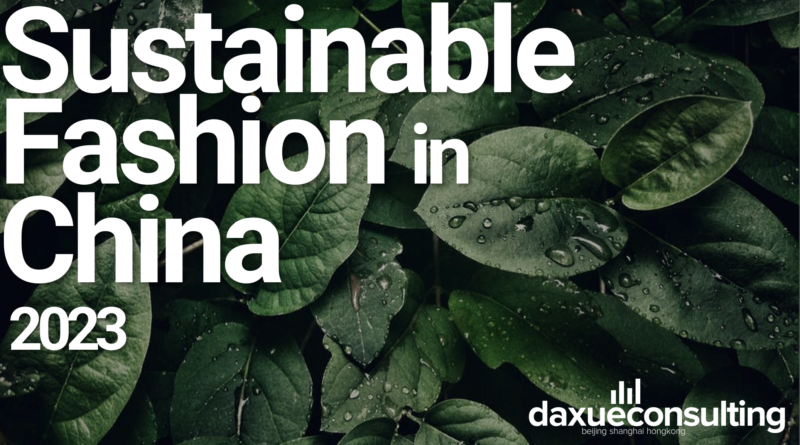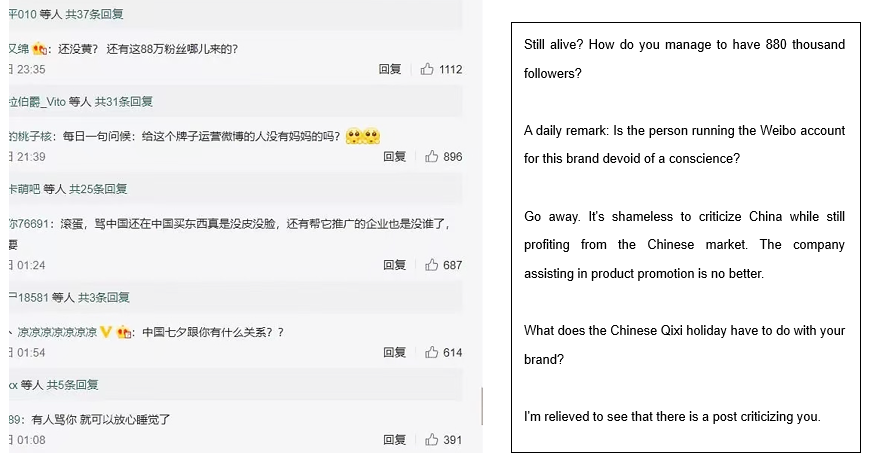Dolce & Gabbana, a renowned luxury brand, once enjoyed immense popularity in China. However, their reputation suffered a significant blow following the release of a promotional video that was perceived as insulting and discriminatory. As a result, the brand experienced a substantial loss of customers in the Chinese market. Despite efforts to repair their image and regain popularity in recent years, Dolce & Gabbana has faced challenges in reclaiming its former prominence in China.
How the provocative video costed the reputation of Dolce & Gabbana in China
In November 2018, Dolce & Gabbana released the promotional film “Eating with Chopsticks“, which was considered a major miss in representing Chinese culture, leaving many viewers feeling disrespected and mocked. In the video, a Chinese girl awkwardly used chopsticks to taste “super-size” Italian dishes. Whether it was the arrogant “Chinese pronunciation” in the clip film, the model’s strange posture while dining, or the ambiguous narration, there were numerous elements raising suspicions of discrimination against Chinese culture.

After being questioned, Stefano Gabbana, one of the founders of the brand, called the Chinese “arrogant” and “stupid” in his personal conversation on Instagram. Moreover, during a chat with model Michele Tranovo about the promotional video, one of the founders made a vulgar comment that caused further damage to Dolce & Gabbana’s reputation in China. As a result, the brand faced significant challenges in regaining the trust and support of its Chinese customers.
Read our report on the future of sustainable fashion

How Dolce & Gabbana lost revenue in China
The promotional video was followed by uproar on Chinese social media. After several months of preparation, the fashion show that was supposed to take place in Shanghai that day was cancelled, and more than a dozen celebrities announced their termination of the contract. Tmall, JD.com and other e-commerce platforms collectively removed Dolce & Gabbana products. In almost a day, Dolce & Gabbana’s online sales channels in China collapsed.
Since the incident, Dolce & Gabbana sales experienced sharp decline, and even the world’s leading luxury e-commerce company YNAP removed D&G from the shelves during Black Friday. According to its 2019 financial report, D&G’s revenue share in the Asia-Pacific market, including China, shrank from 25% in the previous year to 22%. In 2021, its sales in China have rebounded by 20% from 2020, but still remain lower than before the misstep. However, combined with the impact of the pandemic, Dolce & Gabbana’s overall sales fell 15% to about 1 billion EUR (around 7.95 billion RMB) in 2021.
Because of the failure in the Chinese market, D&G’s stock price was also greatly affected. Its losses reached 37.6 billion RMB just eight days after the scandal occurred.
Dolce & Gabbana’ tries ‘s attempts to win back the Chinese market
Despite the challenges faced, Dolce & Gabbana remains deeply concerned about the Chinese market and has taken proactive steps to salvage its brand image. The company has engaged the services of two international crisis management firms to address the situation and restore confidence in its brand.
A constant presence at the China International Import Expo
From 2019 to 2022, Dolce & Gabbana has been an exhibitor at the China International Import Expo (CIIE), an official state-level event hosted by the Ministry of Commerce and the Shanghai Municipal Government. The Italian fashion brand made the most of the occasion to show how much they value the Chinese market and culture. At the event, Dolce & Gabbana ‘s booth was all about China, with Chinese embroiderers showcasing the brand’s sewing skills, and young Eastern painters who painted scenes of the Silk Road to create valuable scarves. By adding such Chinese elements, Dolce & Gabbana was trying to pay homage to the Chinese culture.
Furthermore, in February 2022, CEO of Dolce & Gabbana and other top executives went on a “Chinese Culture Learning Tour”. They visited Xi’an, Beijing, and Shanghai aiming to learn more about China and build stronger ties with the country.

Can virtual idols rehabilitate D&G?
In 2020, Dolce & Gabbana took a strategic step to regain its presence in the Chinese market by ramping up its advertising efforts on popular Chinese social media platforms such as Douyin and Weibo. By targeting these platforms, the brand aimed to reconnect with its Chinese audience and rebuild its reputation after the previous controversies.

Moreover, Dolce & Gabbana launched two female virtual idols, Liz and Sam, donning Dolce & Gabbana’s Qixi capsule collection. Dolce & Gabbana’s decision to use virtual idols in China is driven by two main factors. Firstly, the increasing popularity of virtual influencers in recent years has made them a compelling choice for brands seeking to connect with modern audiences. Virtual idols have gained significant traction in the Chinese market, making them an appealing way for Dolce & Gabbana to engage with tech-savvy consumers. Additionally, another important reason for this choice is that the fashion house has faced challenges in finding a suitable brand spokesperson in China since the past scandal. As a result, using virtual idols allows Dolce & Gabbana to navigate the delicate situation and continue their efforts to rebuild their reputation and reconnect with Chinese consumers. This approach offers a creative and potentially less risky way for the brand to rebuild trust and forge a positive connection with its audience in China.
However, not only did this advertisement fail to gain popularity, but the use of virtual spokespersons clothed in pink stripes, considered unattractive and uncomfortable, drew numerous sarcastic remarks from users.

What can luxury brands learn from Dolce & Gabbana in China?
- When targeting Chinese consumers, companies must prioritize cultural sensitivity. It is essential to avoid stereotypes and take a broader approach, being mindful of the cultural characteristics of the target audience.
- Secondly, it is advisable to invest in a crisis management plan before launching any marketing initiative, as this can help prepare for potential PR crises. Unfortunately, Dolce & Gabbana serves as a counterexample, as their immediate reaction to the social media scandal was far from comforting and, in fact, further aggravated the situation.
- Thirdly, for overseas brands to succeed in China, it is crucial to invest effort in understanding Chinese consumers. This involves continuously monitoring consumer behavior trends, including paying close attention to what users post on social media. By doing so, Dolce & Gabbana, or any brand, can respond promptly to negative comments or feedback from Chinese social media users. Staying proactive and engaged with the target audience enables brands to address concerns swiftly and maintain a positive brand image in the Chinese market.
- Lastly, luxury goods companies must focus not only on the products but also on the brand’s equity. Once a brand’s image has been harmed, it becomes extremely difficult to restore it.
Author: Lyu Ai





